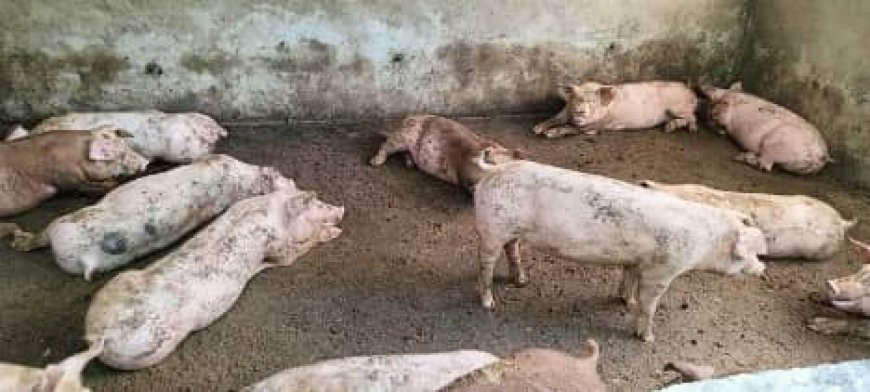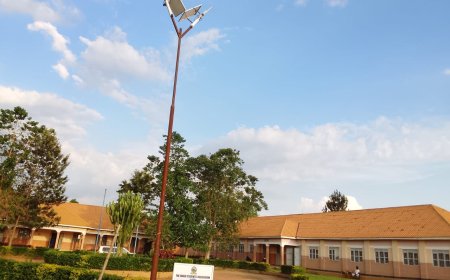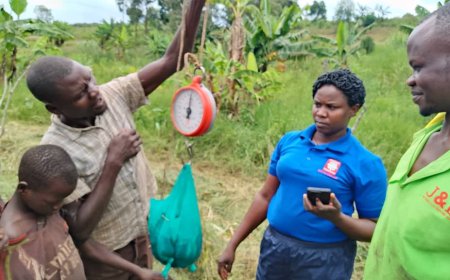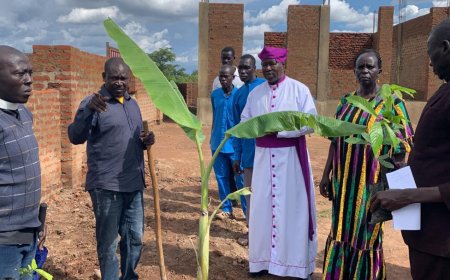Over 500 Pigs killed by African Swine Fever in Zombo District

By Mike Rwothomio
Zombo, Uganda: devastating outbreak of African Swine Fever (ASF) has claimed the lives of 516 pigs in Zombo District, representing an alarming 87.5% mortality rate from the previous year to date, as reported in the Zombo District Veterinary Disease and Parasite Surveillance Report for Quarter Two of the 2024/25 financial year.
Local leaders have pinpointed ASF as a primary driver of substantial herd losses and severe economic repercussions for the swine production sector.
Jane Evalyne Othora, Chairperson of Production, Natural Resources, and Commercial Services, presented the report during a recent council meeting at the Zombo District Council Hall.
Othora noted, "The committee assessed the veterinary sector's disease landscape and identified multiple pathogens and parasites, with African Swine Fever and Foot-and-Mouth Disease (FMD) being the most dominant in our herds."
Affected sub-counties include Nyapea, Warr Town Council, Zeu, Padea Town Council, Alangi, Akaa, and Athuma.
The outbreak has prompted a temporary ban on pork trading, intensifying the crisis for the local swine industry.
Transmission of African Swine Fever
Denis Dongwa, Secretary for Production, underscored the necessity of "prompt case reporting and continuous producer education to curb disease spread."
He attributed ASF’s persistence to illegal pork trading and porous borders with the Democratic Republic of Congo, which enable the movement of infected animals.
Veterinary experts describe ASF as a highly contagious viral disease transmitted through: Direct contact with infected swine, their excrement, or bodily fluids, Indirect contact via fomites, such as contaminated equipment, vehicles, or personnel with inadequate biosecurity protocols, Ingestion of infected pork or pork products by swine, Biological vectors, such as soft ticks of the Ornithodoros species.
The Food and Agriculture Organization (FAO) highlights that controlling ASF in endemic regions like Uganda is complex due to insufficient biosecurity, traditional free-range swine rearing, and unrestricted animal movements.
The role of pig traders, transporters, and pork processing operators in the supply chain is often neglected in biosecurity planning.
Mike Joram Anyolitho, Zombo Town Council District Councillor, advocated for stricter enforcement against illegal pork trading, identifying it as a key factor in ASF prevalence.
ASF, a notifiable disease under the World Organisation for Animal Health (WOAH), poses severe threats to animal health, biodiversity, and producers’ livelihoods.
While harmless to humans and distinct from swine influenza, ASF causes near-total mortality in its acute form.
Historically endemic in Africa, it has spread to Central and Eastern Europe, Asia, and persists in wild boar and domestic swine populations in affected regions.
Clinical Signs
According to WOAH, ASF presents in chronic, subacute, or acute forms. In its acute form, affected swine exhibit:
High fever (40.5°C or 105°F).
Lethargy and reduced feed intake.
Vomiting and diarrhea (often bloody).
Skin discoloration (reddening or darkening, particularly on ears).
Conjunctivitis, respiratory distress, and coughing.
Reproductive losses, including abortions, stillbirths, and weak litters.
Weakness and reluctance to stand.
Preventive Measures
Denis Dongwa, the secretary for production, emphasized collective responsibility in preventing ASF spread, particularly through halting illegal pork trading and restricting cross-border swine movements.
Experts recommend:
Avoiding swill feeding with food waste containing animal products (e.g., kitchen scraps, raw or cooked meat, fish, or pet food).
Secure disposal of food waste and packaging.
Prohibiting meat products in swine-rearing areas.
Strengthened biosecurity across farms and the supply chain, including traders and transporters.
Producers are urged to report suspected cases promptly to veterinary authorities for swift response and containment.
Summary of Quarter Two 2024/25 Disease Report for Zombo
African Swine Fever (ASF): 516 swine deaths.
Newcastle Disease (NCD): 2,694 poultry deaths.
East Coast Fever (ECF): 60 cattle deaths.
Anaplasmosis: 70 cattle deaths.
Heartwater: 3 cattle deaths.
Vaccines for African Swine Fever
Currently, no commercially available vaccines exist for African Swine Fever, posing a significant challenge to disease control.
However, research efforts are underway globally to develop effective vaccines. Recent advancements include experimental live attenuated vaccines and subunit vaccines targeting ASF viral proteins. Trials in endemic regions have shown promise, but issues such as vaccine safety, efficacy against diverse ASF strains, and scalability remain.
Veterinary authorities in Uganda and international partners are monitoring these developments to integrate future vaccines into comprehensive ASF control strategies, alongside enhanced biosecurity and movement restrictions.
Vaccine Development
Currently, no commercially available vaccines exist for ASF, posing a significant barrier to disease control. However, global research efforts are advancing, with experimental live attenuated vaccines and subunit vaccines targeting ASFV proteins showing promise in trials.
Challenges include vaccine safety, efficacy against diverse ASFV genotypes, and scalability.
Veterinary authorities in Uganda, in collaboration with international partners, are monitoring these developments to integrate future vaccines into comprehensive ASF control strategies, alongside strengthened biosecurity and movement restrictions.
ASF is endemic in Uganda, with sporadic outbreaks reported annually, often undocumented due to limited diagnostic capacity.
A 2015 longitudinal study in central Uganda (Masaka and Rakai districts) found high ASF incidence rates in domestic pigs, with 715 pigs sampled across 241 farms.
A 2021-2022 study in the greater Kampala metropolitan area revealed ASFV nucleic acid in 60.7% of pigs sampled at abattoirs, though only 0.15% had detectable antibodies, suggesting low survival rates. From 2001-2012, 388 ASF outbreaks were reported across 59 districts, with 51.8% occurring near national parks and 20.6% near international borders.
The ongoing ASF outbreak in Zombo District underscores the urgent need for robust biosecurity, producer education, and regulatory enforcement to safeguard Uganda’s swine industry and mitigate economic losses.
Councillors under the District production committee have joint call for enhanced surveillance, timely reporting, and future vaccine integration will be critical to controlling this devastating disease.

What's Your Reaction?






































